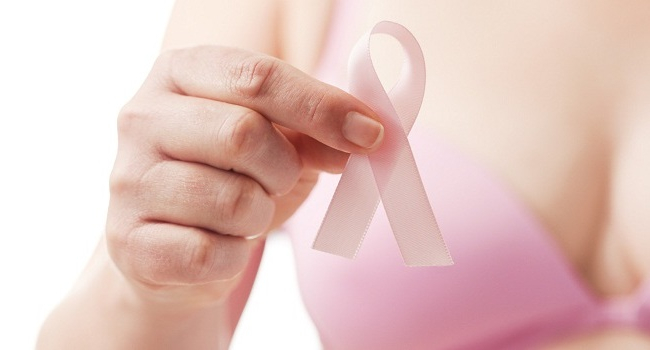Clear rub-on gel could cut the risk of breast cancer by starving cells of the oestrogen they need to keep multiplying
 21:25 8 January, 2019
21:25 8 January, 2019A gel rubbed on to the skin every day could slash the risk of breast cancer.
The clear and odourless gel contains a form of the anti-cancer drug tamoxifen, which has been used for years to treat women with the disease by reducing levels of the hormone oestrogen, which can help some cancers grow.
Now, scientists are carrying out a trial with healthy women to see if a gel containing the drug could prevent cancer in the first place.
The theory is that the gel will reduce breast density and slow down the rate at which healthy breast cells grow, because it will starve them of the oestrogen they need to keep multiplying.
At least one in four pre-menopausal women in the UK has dense breast tissue, which, studies show, can increase the risk of a tumour six-fold.
This means they have larger amounts of milk glands, milk ducts and connective tissue — the fibrous substance that holds everything in place.
On a mammogram (an X-ray of the breast) dense tissue shows up as a solid white area which is difficult to see through, making it harder to spot potentially cancerous growths.
Breasts that are less dense have more fatty tissue, which shows up as dark and transparent — making it easier to identify tumours.
Breast density is usually inherited but declines naturally with age; more of the tissue turns to fat in later life.
It’s not clear why cancer risk is increased in those with dense breast tissue, but one theory is that it may be due simply to the higher number of cells packed into the breast. In short, there is more opportunity for cancerous mutations to develop, and once they do, the cells feed off the oestrogen that is already present in the body.
Researchers have discovered that tamoxifen can have a significant effect on the make-up of breast tissue.
A 2011 study by Queen Mary University of London, involving nearly 1,000 women with high breast density who took tamoxifen tablets daily for up to 18 months, found nearly half saw density decline by more than 10 per cent. As a result, they were 60 per cent less likely to get cancer.
Tamoxifen blocks the effects of oestrogen by binding to cells in breast tissue and preventing the hormone from ‘docking’ with them and triggering cell multiplication. But tamoxifen tablets can have debilitating side-effects, from nausea and hot flushes to blood clots and an increased risk of womb cancer.
Many women have to stay on the drug for five years after remission, but it’s estimated up to half stop taking it before then because of the side-effects.
The gel form is likely to be much safer because it is impregnates only breast tissue, whereas tablets circulate drugs round the body.
In the current trial — under way in hospitals in the U.S., Germany and Spain — 330 women aged 35 to 75 will apply the tamoxifen gel (called BHR-700), or a placebo, on their breasts daily.
The women all have dense breast tissue but are free of cancer. After a year, they will have another X-ray to measure the effects on tissue density. Results should be available next year.
Dr Kotryna Temcinaite, from the charity Breast Cancer Now, says: ‘Using tamoxifen in the form of a gel to reduce breast cancer risk is a really exciting prospect and could minimise the side-effects compared with taking the drug orally.
‘We look forward to the results of this trial.’
Source: The Daily Mail